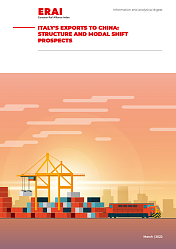Thomas Christenson, chief operating officer of sennder, said, «Over the last three years, we navigated the most substantial and unprecedented set of macro-economic shocks to logistics in decades. Driver shortage, record-high fuel prices, supply chain disruptions, and inflation spawned market volatility. We anticipate that these macro-economic structural issues will continue into 2023, and have analysed the root of each of these issues in this report.»
European road freight transport costs at record level — increases of up to 24% on certain routes
Due to record high fuel prices and tightening driver shortage, road freight transport costs increased in 2022 by 13% across Europe. Specific country corridors were much more varied. Costs for Polish outbound routes towards Germany increased by 24% from January to December 2022, despite relatively weak exports throughout the year. Domestic corridors in Germany, which are typically one of the most capacity constrained corridors, saw an increase in rate by 18% in 2022. The Spanish outbound route towards the Netherlands grew by 9%, less than market average, as Spain’s key agricultural exports suffered from extreme temperatures and drought over the summer. In 2023 the general cost trend flips, as economic activity has continued to weaken alongside seasonal lows: across Europe, transportation costs have declined in January and February 2023 below January 2022 levels by 4%.
Spiking spot rates leading to higher contract rejection rates for many carriers
The sennder spot opportunities index reveals that the spot market had a particularly active first half of the year in 2022. Historically tight market conditions and spiking spot rates led carriers across the market to reject contracted loads in favour of more profitable spot loads. This self-reinforcing cycle meant that more shippers were forced to turn to the spot market, stoking spot opportunities by 7% in May 2022 compared to January 2022. As the market loosened in the second half of the year, spot opportunities declined by more than 50% and prices reached parity with contract rates in November. While this trend continues in the beginning of 2023, it is hard to predict the outlook given the intrinsic link to the wider economy.
Increasing demand for advanced fuels and green road freight
The increased importance shippers place on transport sustainability not least due to tightening policy requirements make the introduction of green transportation solutions more than a trend. sennder own data indicates increasing demand for green transportation solutions. In 2022, the volume of green loads (incl. renewable diesel, electric as well as multimodal transports) shipped through sennder’s platform has increased fivefold. This trend is expected to continue into 2023.
Graham Major-Ex, director of Green Business & eMobility at sennder, noted, «In the immediate term advanced fuels are an excellent way to reduce carbon emissions without additional capital investment in vehicles or infrastructure. These advanced fuels, like HVO, allow carriers to differentiate themselves and win additional business from shippers who are demanding low carbon solutions. We believe this is a permanent trend. Thinking beyond today, we believe the implementation of electric trucks at scale is right around the corner and the future of heavy road freight logistics.»
2023 Outlook
As sennder’s industry cohort analysis reveals, shippers producing essential products such as Food & Beverage are expected to hold up better in the current volatile market environment. Historically, durable goods (especially big-ticket items like cars) tend to experience the biggest decline during recessions as consumers feel uncertain about their future spending patterns. The flipside is these tend to bounce back fastest in the recovery. The speed of China’s emergence from its wave of Covid will be a key determinant of export recovery and supply chain issues.



